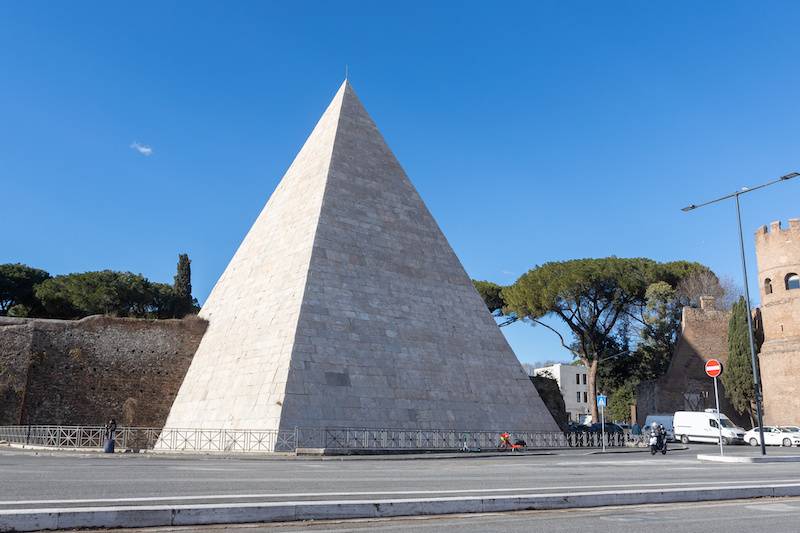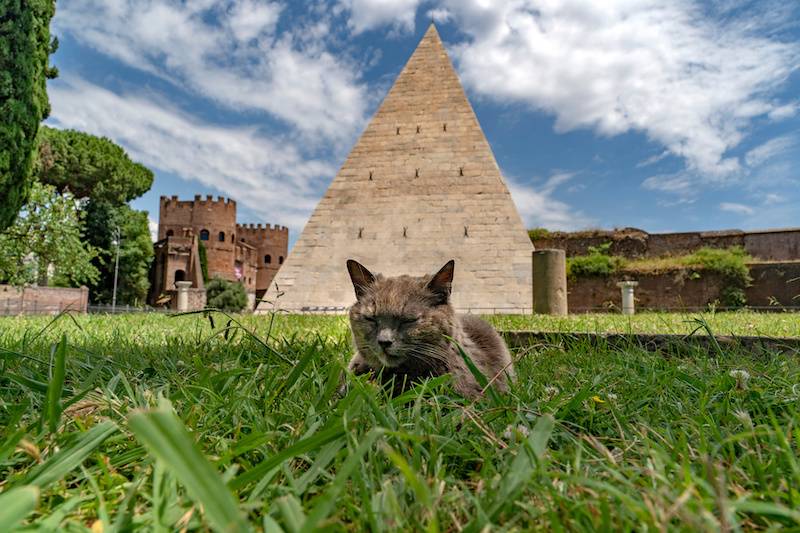If you wander through the streets of Rome, more precisely in Via Ostiense, you will stumble upon something that will at first seem quite weird: a Pyramid. You’ll probably wonder why there’s what looks like an Egyptian pyramid in Rome and the answer is actually quite simple. Let’s find out more about the Pyramid of Cestius!
The tomb of Caius Cestius
When Egypt was conquered by Ottaviano Augusto in 31 BC, some of its cultures were absorbed by the Romans. Something that became quite fashionable was creating Pyramids as tombs. Pyramids were not the only thing that was inspired by Egypt though; obelisks, for instance, used to decorate different areas of Rome, were also inspired by Egyptian architecture that the Romans loved.
Rome’s only intact pyramid to this day belonged to the magistrate, praetor and priest Caius Cestius. This pyramid was built between 18 and 12 BC and, as the inscriptions located on the mausoleum containing the words of Caius Cestius’ will says, in order for his descendants to get his inheritance, they had to make sure that the construction wouldn’t take more than 330 days after his death.
This tomb is 36 meters high and it has a base of circa 30 square meters. The structure is made of Lunense marble slabs. The interior consists of a funerary room and a barrel-vault room painted white and decorated with many frescoes depicting different nymphs, crowns and winged Victories.

What happened to the other Pyramids?
As said before, many politicians and nobles built pyramids for them to be buried in but the only one that managed to stay intact to this day is Caius Cestius. This is partially due to the fact that this pyramid was, shortly after its construction, surrounded by Rome’s protective walls.
Ancient Rome had a very strict law prohibiting the construction of tombs and mausoleums within the city walls. This law didn’t last very long with the expansion of the city throughout the III century AD and so, thanks to Emperor Aurelian, the Pyramid was integrated into the city’s protective walls. This actually contributed to its conservation.
The restoration of Pyramid Cestius
The Pyramid we see today though underwent some important maintenance work and cleaning. Thanks to the Japanese Yuzo Yagi who chose to give Italy 2.7 million euros because it had a huge impact on the growth of his business, the Pyramid was fully restored. The exterior was fully cleaned and its marble facade, frescoes, and inner chambers were restored and open to the public.
Visiting the Pyramid
Nowadays, as said before, it’s possible to visit the Pyramid on the third and fourth Saturday and Sunday of each month. If you want to get to know more about Pyramid Cestius and visit it, make sure to book a private tour of Rome with us for the best experience possible!


